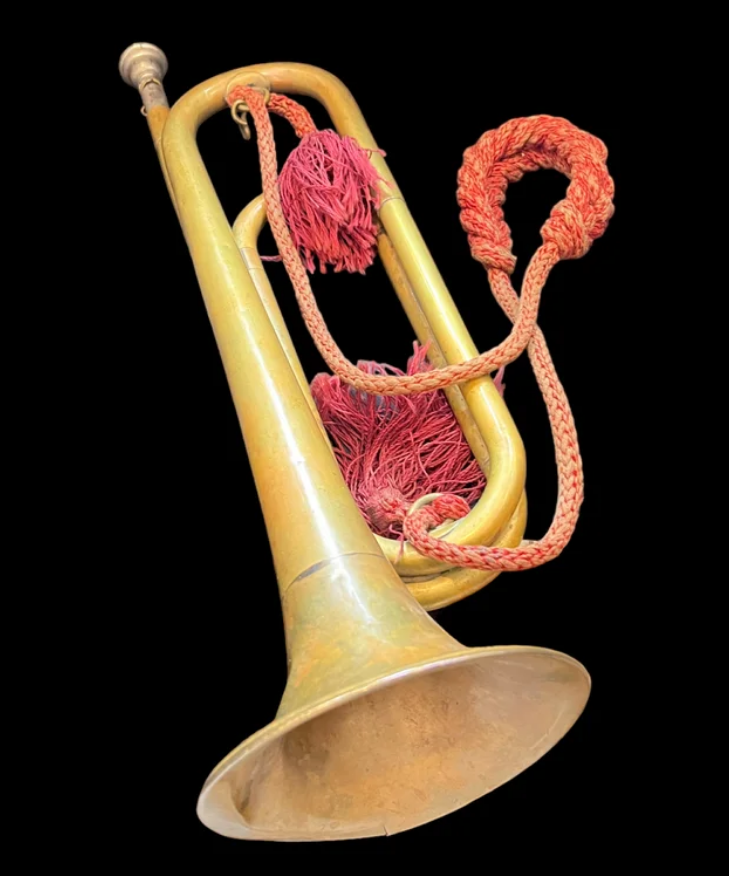Bugle Boy from Company B !

Boogie Woogie with this Bugle from Time’s Tin Cup !
Ever wonder why bugles are so affiliated with the Army?
When George Washington first assumed command of the Continental Army in 1775, drums and bugles were already a fixture of military life. In a time before radios, there was simply no other way for a commander to communicate his orders over the sounds of muskets, clashing sabers, and booming cannons. Bugles were even used to call in work parties far from camp foraging for the horses or gathering firewood. They knew to return to camp when they heard the bugle call for “Retreat”.
In the frontier outposts of the late 1800’s, bugle calls united Soldiers and their Families. These small, lonely forts with garrisons of only one or two hundred Soldiers were often far from the nearest town. Household clocks were set by the bugle calls; one Army wife even used “Assembly” as the signal for the children to take their naps.
Days began early for Soldiers on the frontier, just as they do now. They began feeding and grooming horses before dawn, and following “Reveille” they had breakfast. Soldiers came together for inspection when they heard the call for “Assembly.” The Soldier with the best uniform and equipment was selected to be the commander’s orderly, which gave him bragging rights and (sometimes) the following day off.
After inspection, the Soldiers trained in critical skills that might still sound familiar to Dog Face Soldiers today: marching, bayonet fencing, marksmanship, and gen crew drills. “Mess Call” to lunch ended the morning training.
Soldiers spent most of the afternoon in fatigue details, such as chopping wood, maintaining the building and stables, and taking care of the horses. Soldiers returned from these tasks when the bugler sounded “Recall” giving the Soldiers time to prepare themselves for the evening parade and “Retreat”.
The day at most frontier outposts ended with a parade of the entire command around the central field. This was a way to inspect the discipline and equipment of the unit. Prior to the 1890’s Soldiers were required to assemble for a final roll call at 2200 for “Tattoo”.
Download the Bugle Call schedule here.
Related:
Leave a Reply